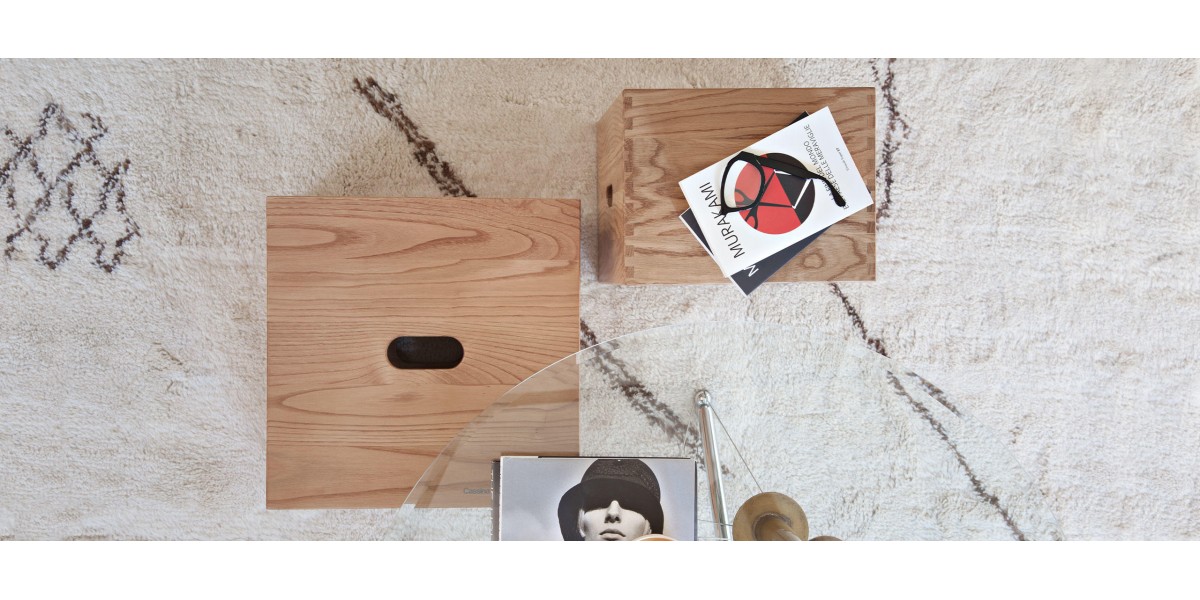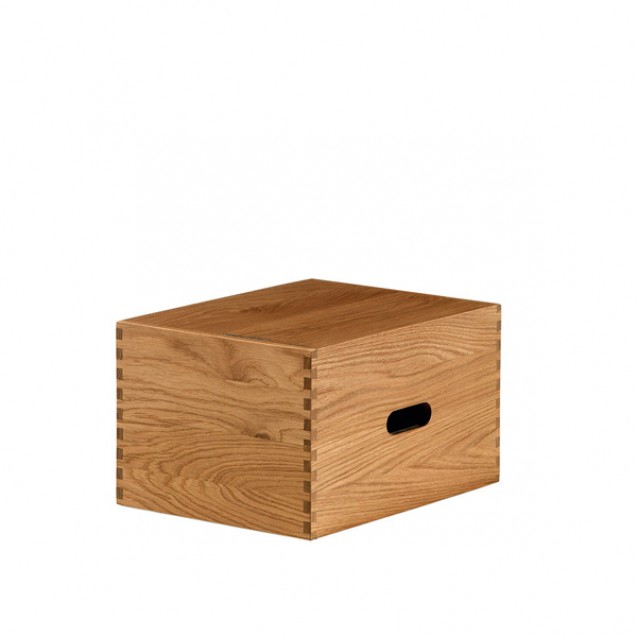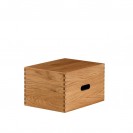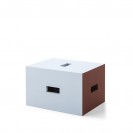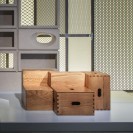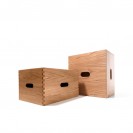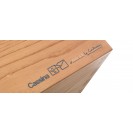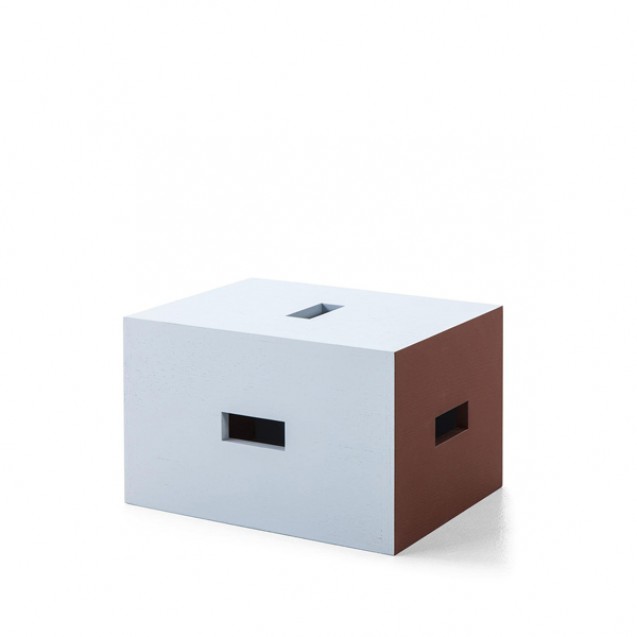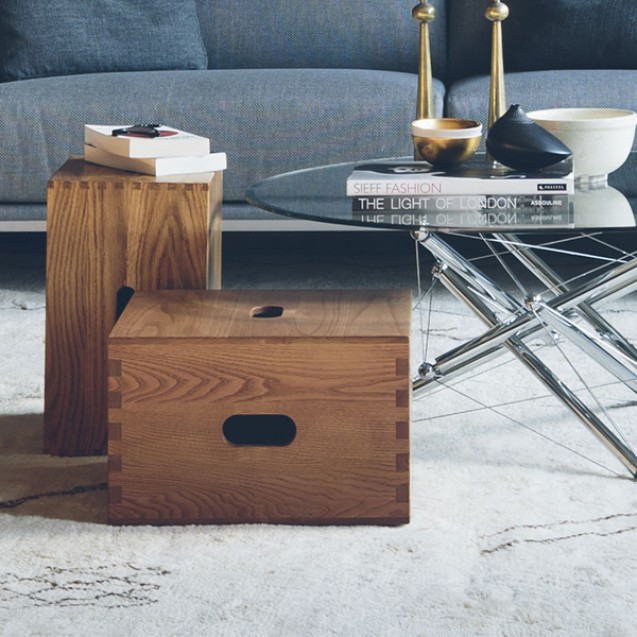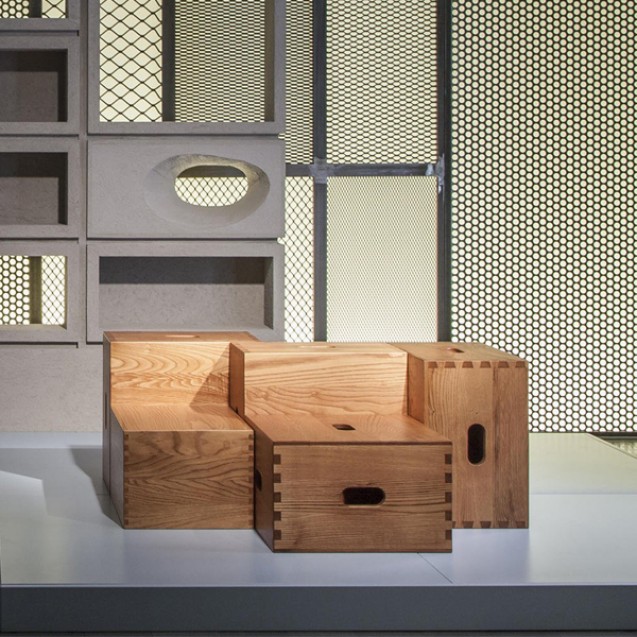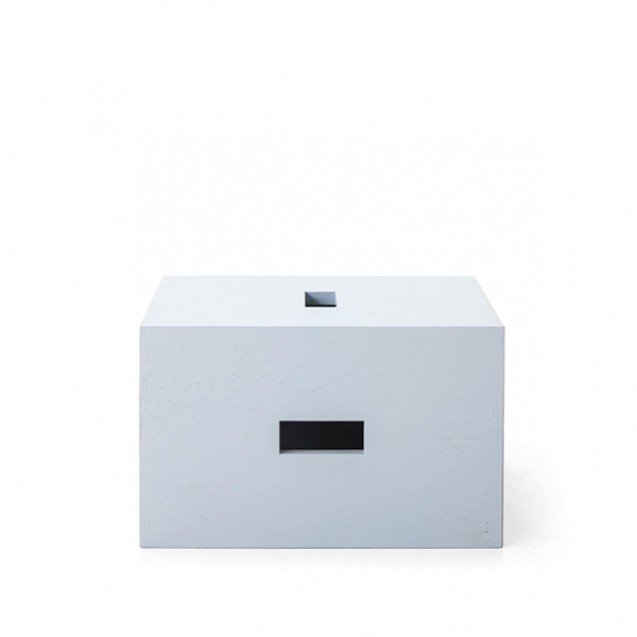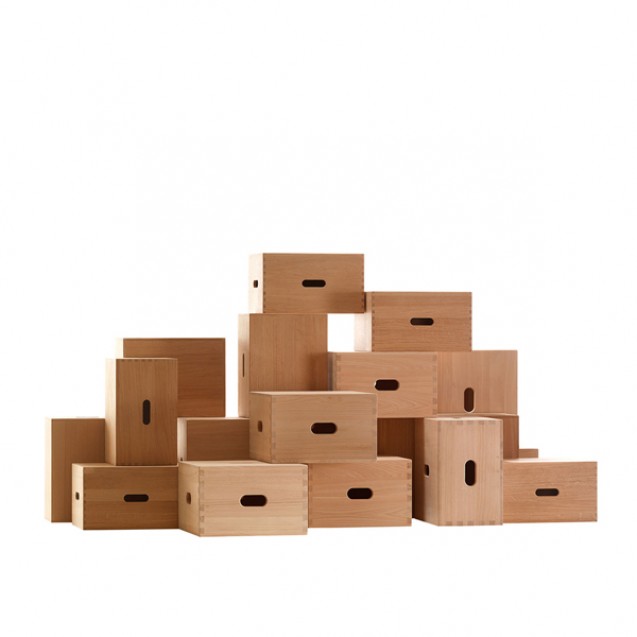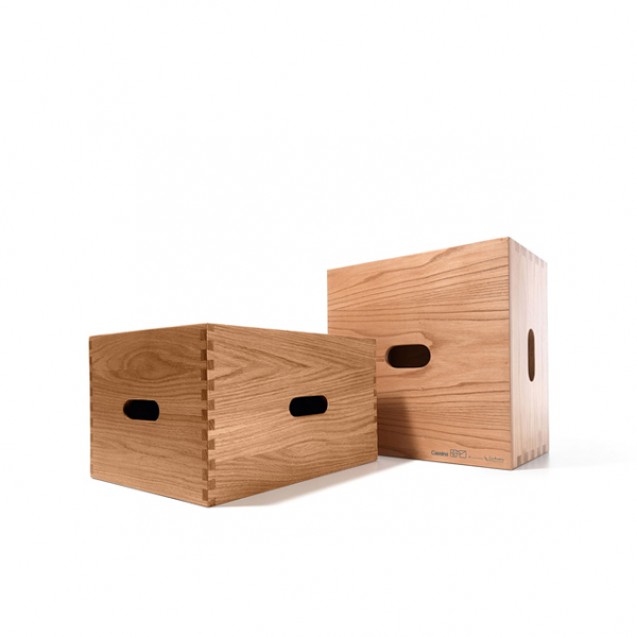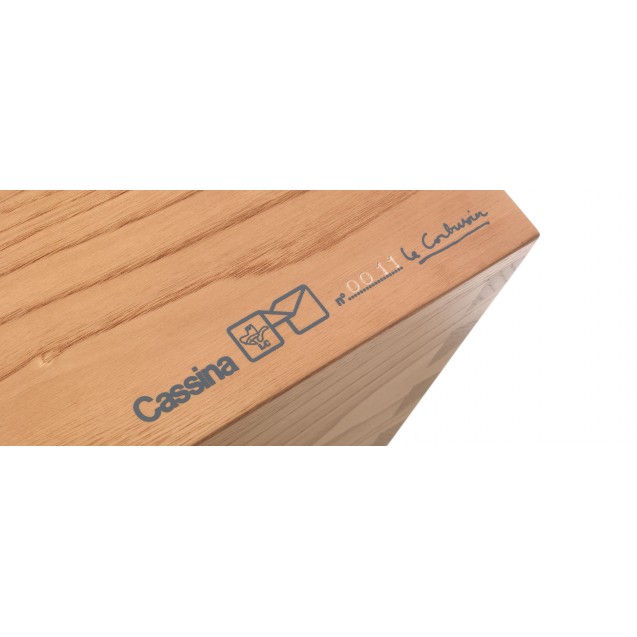LC14 Tabourets & LC14 Tabouret Nantes Reze’
LC14 01 Tabouret stool Cabanon
Designed in 1952 for the Cabanon, a hut built by Le Corbusier on
the French Riviera, where alongside the many fixed furnishings, the furniture
was all conceived as boxes.
This stool is Spartan and yet at the same time sophisticated due
to its dovetail joints that highlight the connections between the solid wood
surfaces.
The oblong hole on each side makes Tabouret very easy to handle.
Made in natural-coloured solid chestnut wood.
LC14 02 Tabouret stool Maison du Brésil
Designed by Le Corbusier in 1959 for the Maison du Brésil at the
Cité International Universitaire de Paris.
The oblong openings on the two main sides make it easy to move the
stool, which can be positioned either horizontally or vertically.
The exclusive system of dovetail joints on the corners shows off
the precision and skill of Cassina in working solid wood.
LC14 LC Tabouret Nantes Reze’
This stool/low table was created for the children’s
rooms in the Unité d’Habitation in Nantes Rezé. Designed using the poetics of the objet trouvé, dear to Le Corbusier in the latter part of his
life, this piece is now available with a number of added details compared to
the original in the Cassina collection. Developed after the first design for
the Tabouret Cabanon in 1952, whose main face measured 43cm x 43cm, this piece
was a precursor to the 43cm x 33cm Tabouret du Brésil, the main difference
being that its joints were less complex. The other two versions are
characterised by dovetail joints while this version privileges simple
right-angles. The different faces, in open-pore varnished oak, is
available in two of the Corbusier palette colours: ultramarine blue and brown.
The rectangular slots each side, featuring unrounded corners, are used for
lifting and moving the stool.
| About Designer | |
|---|---|
Le Corbusier |
Chaux-de Fonds/Roquebrune-Cap-Martin, 1887/1965 Charles-Edouard Jeanneret, known as Le Corbusier, was
born at La Chaux-de-Fonds, in the Swiss Jura, in 1887; he died in France, at
Roquebrune-Cap-Martin, on the French Côte d’Azur, in 1965. Early in his career his work met with some resistance
owing to its alleged «revolutionary» nature and the radical look it acquired
from its «purist» experiments; in time , however, it won the recognition it
deserved and it is still widely admired. His message is still being assimilated
by an ever increasing number of people in the profession, but his far-out
avant-garde attitudes should be interpreted with due consideration for the use
of rational systems in his planning method, evidenced by extremely simple
modules and formes based on the functional logic. «Functionalism tending not so much to an exaltation of
the mechanical function at the expense of the symbolic, as to the rejection of
symbol that he now considers outmoded and insignificant and the restoration of
the pratical function as a symbol of new values»(¹) In his activities as town-planner, architect and
designer, his method of research continued to develop, at times going to the
opposite extremes of a rich plastic idiom. Instances of this are: Unité d’Habitation, Marseille (1946-52); the Chapel at Ronchamp (1950-55); the Dominican Monastery «La Tourette» (1951-56); the Centre of Zurich (1964-65) the Hospital in Venice (1965). Much the same commitment will be found in the
furniture of the Equipement intérieur de l’habitation (tables, chairs,
armchairs, sofas) designed for the Salon d’Automne, 1928, with Pierre Jeanneret
and Charlotte Perriand and “Casiers Standard”, system of container units
designed for the Pavillon of the Esprit Nouveau, 1925, with Pierre Jeanneret.
Cassina re-proposes this furniture
considered “up-to-date”; its clear and essential “form” is highly adaptable to
change in time and in environment, constantly providing new significance. |
